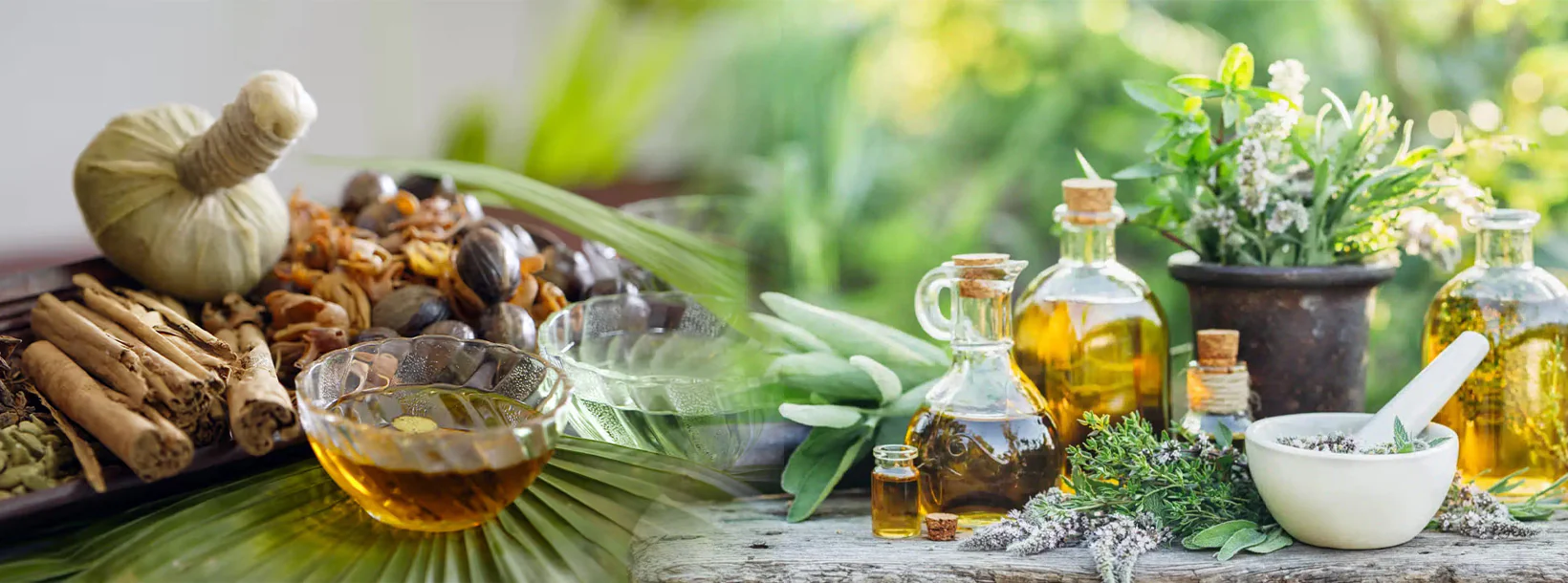
ආයුර්වේද ඖෂධීය ශාක
ශ්රී ලංකාවේ ආයුර්වේද සම්ප්රදාය තුළ සියවස් ගණනාවක් තිස්සේ භාවිතා කරන ලද ඖෂධීය ශාක වර්ග රාශියක් ඇත. ශ්රී ලංකාවට ආයුර්වේද වෛද්ය විද්යාවේ පොහොසත් සම්ප්රදායක් ඇති අතර, එහි දේශීය දැනුම සහ විවිධ ඖෂධීය ශාක මත පදනම් වේ. ශ්රී ලංකාවේ දක්නට ලැබෙන කැපී පෙනෙන ආයුර්වේද ඖෂධීය ශාක කිහිපයක් මෙන්න:
Hibiscus tiliaceus
Hibiscus tiliaceus, commonly known as sea hibiscus or beach hibiscus, is a fast-growing evergreen shrub or small tree native to tropical and subtropical coastal regions. It typically reaches heights of 3 to 6 meters, with a spreading canopy and heart-shaped leaves. The plant is notable for its large, trumpet-shaped flowers that open bright yellow with a deep red center and gradually change to orange and red before falling within a day.
This species thrives in coastal environments, tolerating saline conditions and occasional flooding. It is often found along beaches, riverbanks, and mangrove edges, where it plays a role in stabilizing soil and preventing erosion. Its adaptability to various soil types and resistance to harsh coastal conditions make it a valuable plant for landscaping and ecological restoration projects in shoreline areas.
Hibiscus tiliaceus has a range of traditional uses. The fibrous inner bark is utilized for making ropes, Fishing nets, and mats, while the lightweight wood is employed in crafting canoe parts, tool handles, and furniture. In some cultures, the leaves are used as natural wrappers for food, and the young shoots are consumed as vegetables. Additionally, various parts of the plant are used in traditional medicine to treat ailments such as fevers, coughs, and skin infections.
Due to its ornamental appeal and practical benefits, Hibiscus tiliaceus is cultivated in gardens and public spaces across tropical regions. Its rapid growth, attractive foliage, and vibrant flowers contribute to its popularity as a decorative and functional plant in coastal landscapes.
-

අංකෙන්ද
Acronychia pedunculata -

බෙලි
Aegle marmelos -

බක්මී
Nauclea orientalis -

වෙනිවැල්
Coscinium fenestratum -

රසකිඳ/බූකිඳ/වල්කිඳ
Tinospora malabarica -

බූ කොබ්බෑ
Allophylus cobbe -

දැඩිකහ/දොඩං කහ/වැලිකහ
Memecylon capitellatum -

දියමිත්ත
Cissampelos pareira -

ඇඹුල් දොඩම්
Citrus aurantium -

ගස් නිදිකුම්බා
Biophytun reinward -

හීන් තඹල
Carmona microphylla -

ගොරකා
Garcinia cambogia -

කරපිංචා
Murraya koenigii -

කැප්පෙටියා/ගස් කැප්පෙටියා
Croton laccifer -

කොහොඹ
Azadirachta indica -

හීන් බැබිල
Sida alba -

කුඩුමිරිස්ස/කුඩුමිරිස්
Toddlia asiatica -

කුරුඳු
Cinnamomum zeylanicum -

මහ කරඹ
Carissa carandas -

මූණ මල්
Mimusops elengi -

නෙල්ලි
Phyltanthus emblica -

පුවක්
Areca catechu -

රතඹලා
Ixora coccinea -

පත් අඟුණ/රුක්අඟුන
Alangium salviifolium -

සපු/ගිනිසපු
Michelia champaca -

සියඹලා
Tamarindus indica -

වලංගසාල්/වල් එම්බිල්ල
Embelia ribes -

වල් කරපිංචා
Micromelum ceylanicum -

වෙල්ලන්ගිරිය/යකා බැඳි වැල්
Paramignya monophylla
ආයුර්වේද සහ ඖෂධීය
-
Siddhalepa Ayurveda Herbal Balm
Regular price From Rs 100.00 LKRRegular priceRs 200.00 LKRSale price From Rs 100.00 LKRSale -
Lakpura Wildcrafted Soursop (Guanabana, Graviola, Guyabano) Dehydrated Leaves Whole
Regular price From Rs 400.00 LKRRegular priceRs 500.00 LKRSale price From Rs 400.00 LKRSale -
Link Swastha Triphala
Regular price From Rs 600.00 LKRRegular priceRs 700.00 LKRSale price From Rs 600.00 LKRSale -
Sethsuwa Pranajeewa Oil
Regular price From Rs 1,000.00 LKRRegular priceRs 1,200.00 LKRSale price From Rs 1,000.00 LKRSale

















































